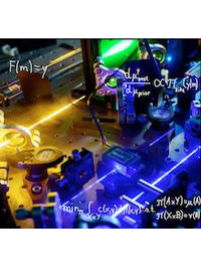We witness an era where unprecedented amounts of data are acquired in experimental research in the natural sciences. While new measurement techniques and instruments keep being devised and improved for inexpensive and efficient data acquisition, the current bottleneck is how to extract meaningful information from the resulting vast amounts of such measurements. Typical reasons are that modern measurement technologies often provide such information only in an indirect manner and that the observational data are strongly corrupted by noise and often generated in an inherently random way. The goal of this Collaborative Research Center is to contribute to the efficient extraction of maximal quantitative information from experimental data, backed by mathematical modelling and analysis.
Research in this CRC is steered by data. We focus on three types of structures that are abundantly prevalent in experimental data:
- data with geometric nonlinearities,
- data with incomplete information, and
- data with information in their dependency structure.
Under this umbrella, at least one experimental scientist and one mathematician have teamed up in each of the proposed projects in order to study a specific type of experimental data ranging from condensed matter physics, molecular and cellular biophysics, structural biology, biomedical research to astronomy.
We build on existing strong ties between applied mathematics and experimental natural sciences, which have been established over more than a decade and that are unique to the Göttingen Campus. In the long run we envision that the new mathematical tools for analyzing experimental data will enable new experimental techniques of unprecedented power.
C06 - Optimal transport based colocalization
Biological cells are highly organized complex entities. For instance, it is hypothesized that cells regulate metabolic activity by controlling the dynamic assembly of the involved proteins. This concept is called substrate channeling and perturbations thereof are associated with various diseases. Past and ongoing developments in super-resolution microscopy techniques allow increasingly detailed images of cells and protein distributions far below the conventional diffraction limit. In this project we seek to develop tools based on optimal transport theory for the analysis of the acquired images to understand to what extent cells can control the relative spatial distribution of proteins.
Find more information about the SFB1456 on the web: SFB 1456

